Continued from Thimphu
Part 2: Punakha
We had to make an early start as we wanted to get to Punakha by lunch. Early during vacation is around 8AM. The journey time itself isn’t much – between 2 to 2.5 hours, but we had a few things to finish off before that. The first stop was Dochula, about 40 minutes from Thimphu. Thimphu is at an elevation of about 2300 m, and Dochula is 800 m higher, and quite colder. On clear days, it is possible to see the Eastern Himalayas, and specifically Gangkhar Puensum, Bhutan’s highest peak. Clear days are a rarity though, to the extent that even Sonam (our guide) hadn’t seen the peaks. The 108 stupas there are themselves worth the visit though, and the mist and the sun playing hide and seek also offer some excellent views. The Druk Wangyal Lhakhang temple is there as well, though we didn’t visit.
For most people though, the cafe and its loo (not usable unless you’re a customer, and a rule that is more often than not broken) are important points in the journey!
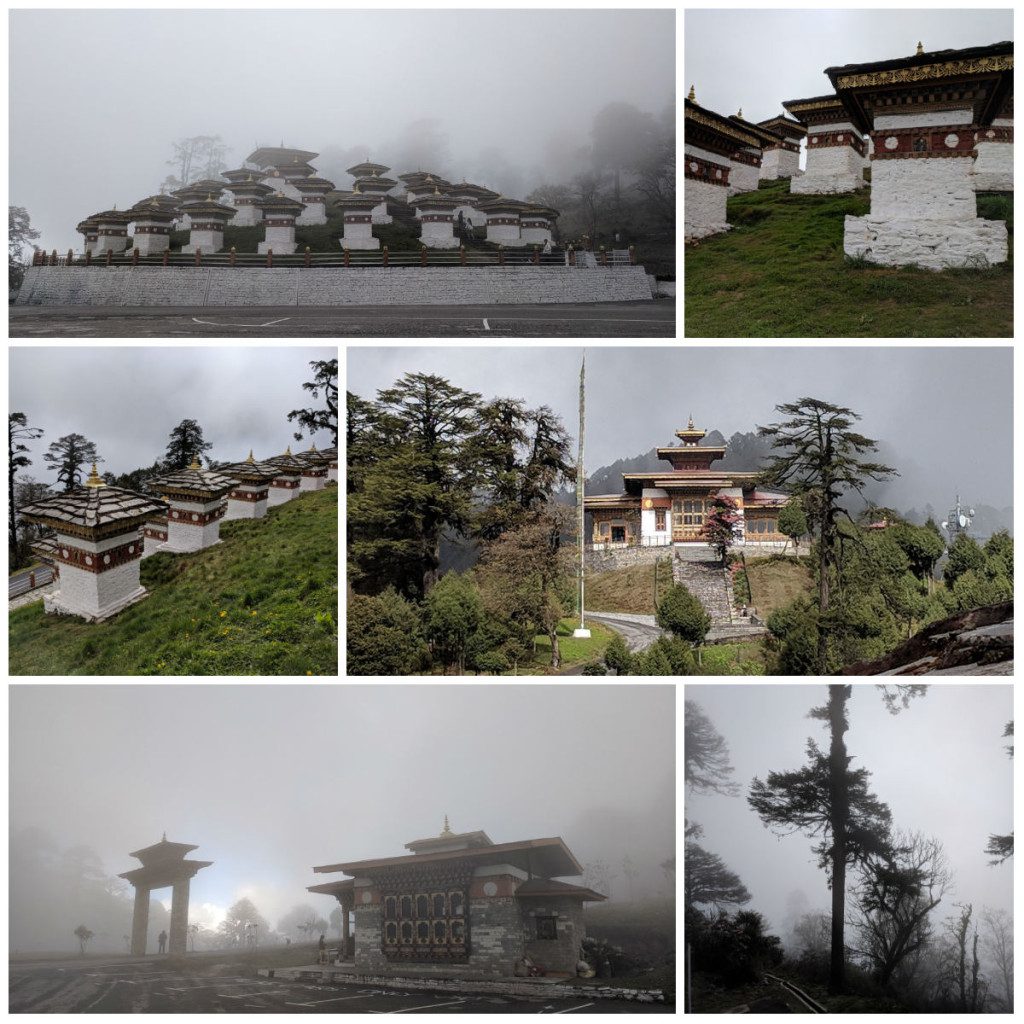
From then, we wound our way through mountain slopes towards Punakha, which is at a much lower altitude – around 1300 m. Outside of Tiger’s Nest, this was the most picturesque part of our trip. It reminded us of Leh, where every turn produced a new fantastic panorama with hues different from the previous one, and the shutterbugs in us just couldn’t stop!
In small shops on the roadside, we caught Bhutan’s version of pani puris – pretty gigantic! Finally, we caught sight of Punakha town, with Wangdue very close by.
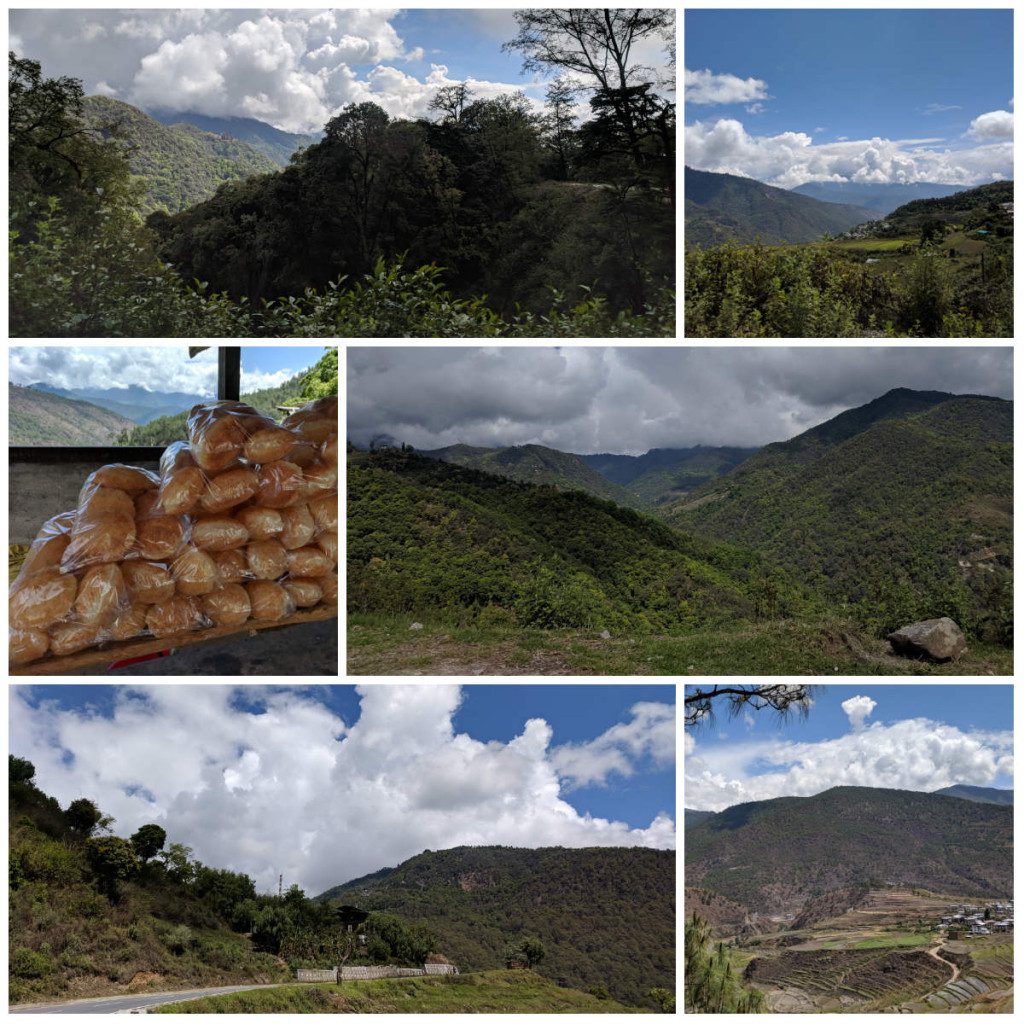
Since we were early enough, we proceeded to the Punakha Dzong. Each district in Bhutan has a dzong, which has religious, administrative and military functions. This one is the second largest and second oldest, situated at the confluence of the Mo and Pho rivers, and considered the most important since it is also the seat of Bhutan’s spiritual leader for a part of the year. The building is magnificent, and together with the jacaranda trees, it makes a very pretty picture. It is quite the tourist spot going by the crowds. Sonam took us through the place in about an hour, and we were then on our way to see the suspension bridge – the longest in Bhutan.
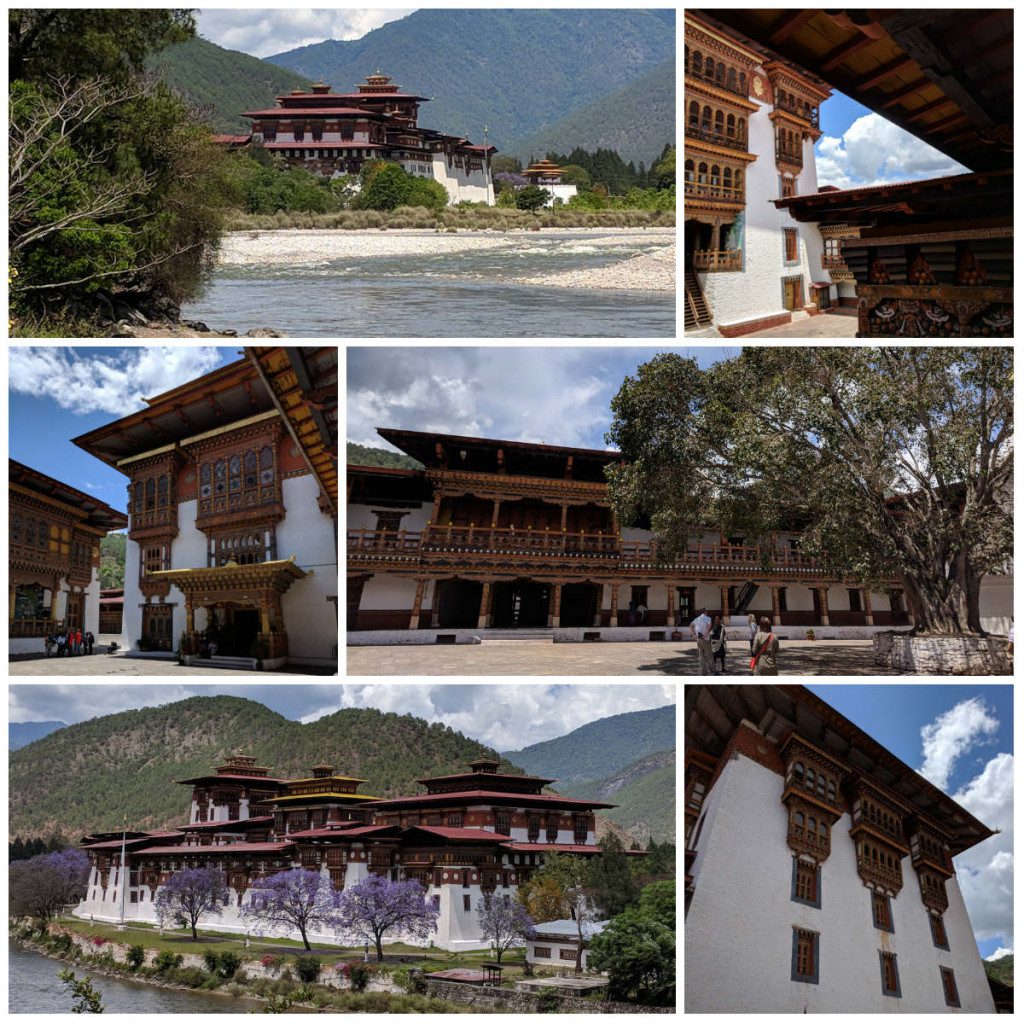
Lunch was at WiFi, a place that was on our list as well as recommended by Sonam. The title is click bait since we never could figure out WiFi there. What works for the place are a nice view (if you sit outside), reasonably clean loos, and friendly staff. We didn’t go for the buffet, and ordered a la carte. Turned out to be mostly meh. The red rice is only different in terms of colour, and not the completely different ones we get in Kerala. The pork was chewy and only the beef dish managed to be decent enough.
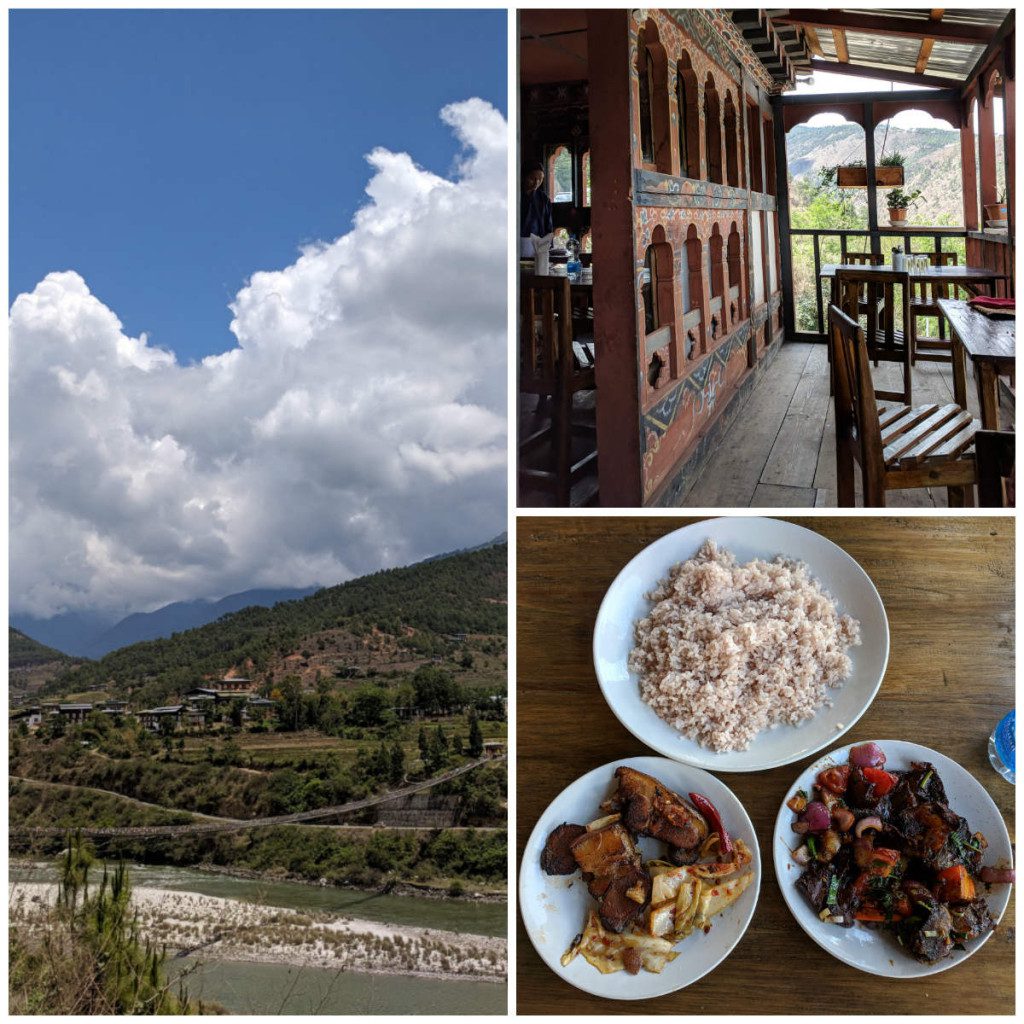
Dragon’s Nest Resort was our camp for the day, and though the room was basic, there were some very pretty views on offer. There was a certain calmness to the place that was very appealing. On a side note, we had expected not to have internet access after Thimphu, but all our hotels had very good WiFi.
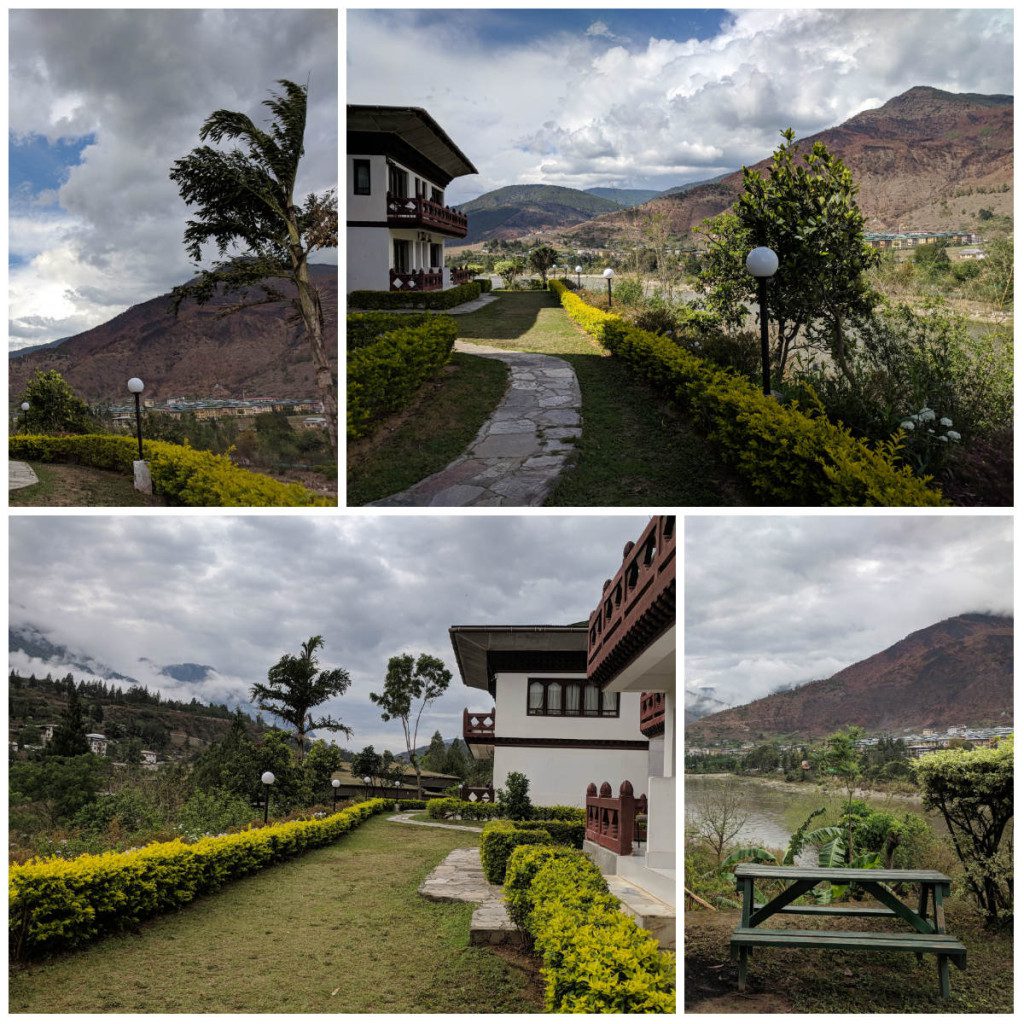
After resting for a bit, Sonam came to pick us up for the evening plan – Chimi Lhakhang. A nice half an hour walk through fields and a village, followed by a small climb takes you to the place.
There are a bunch of interesting stories around this place, usually involving the person who founded it – Lama Kunley, aka Divine Madman. Most stories are NSFW, starting from his first d**k move – subduing a demoness at Dochula with a tap of his “magic thunderbolt of wisdom”. Yes, that thunderbolt is what you think it is. She ran away to Punakha and took on the form of a dog to avoid detection. But oh no you don’t, said our hero, and promptly found her, and killed her. Chi-mi apparently just means no-dog.
The thunderbolt thus became legend. It is a symbol you will find all over Bhutan, but most prominently in this place. It does seem that his ways of teaching Buddhism were purposely obscene to provoke people into giving up their preconceptions, as he felt that the clergy and their rigid ways were preventing people from grasping the essence of the Buddha’s teachings.
But Kunley’s exploits seems to have created a much bigger fallacy (pun was originally unintended). Over time, the symbol has become more than just that – from all sorts of creative expressions to fertility blessings. The temple has a photo register of folks who got pregnant after a visit. Oh yeah!
Now the interesting parts of our visit. D had told Sonam that she wanted to be part of a traditional prayer meeting, and Sonam had promised that this would be done at Chimi Lhakhang. We had timed our visit around prayer time too, but it seemed like the monks there were more interested in football! D’s mental picture of a prayer meeting included a lot of monks, peaceful chanting, incense, and a collective sense of calm. In addition to the graphic graphics, we got two monks, monotonous chanting, and an excellent alcohol smell. The last because that is considered an offering here! After this and the temple’s fertility tag, D has refused to be associated with any photographs from around these parts, or even comment about her visit! I found it difficult to stop laughing for quite a while.
The gross in the country’s famed gross national happiness is now clear to me!
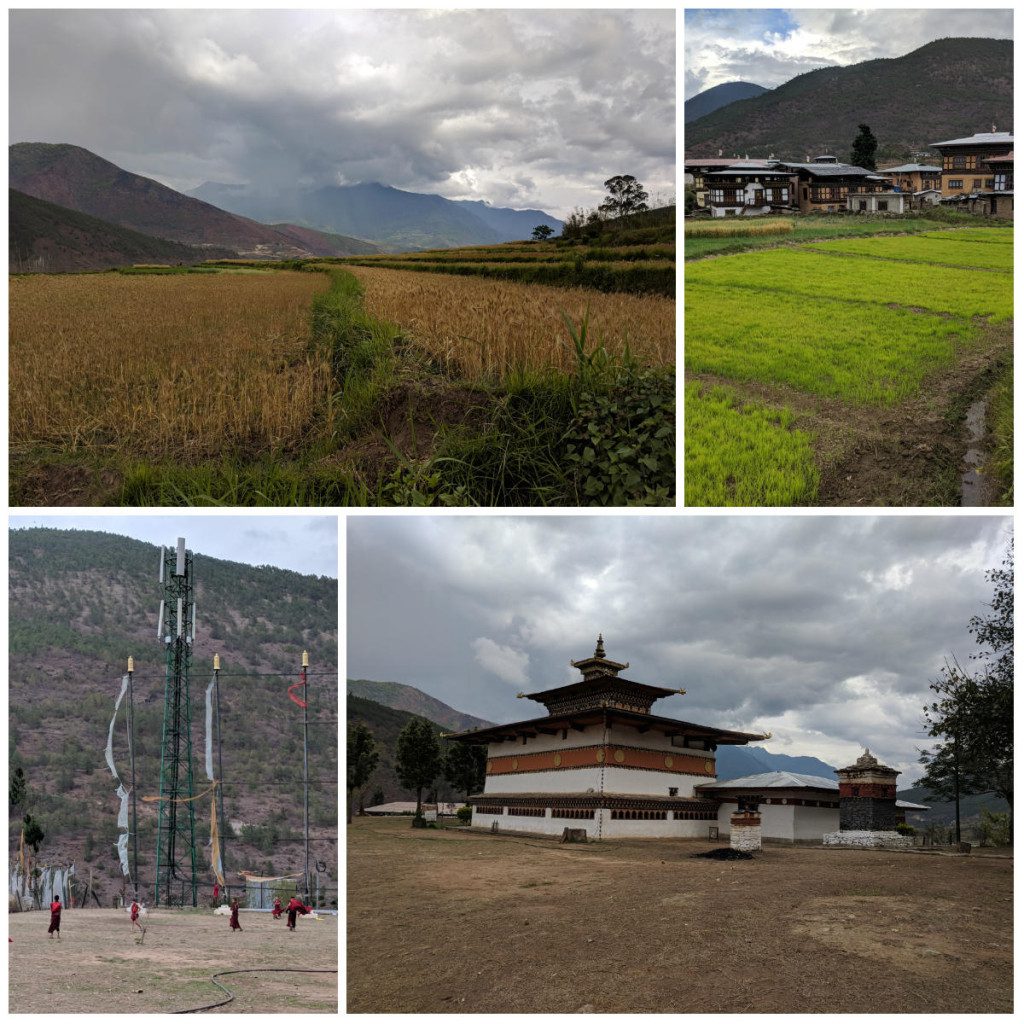
We finished our walk just in time. It started raining as we drove back to the resort.Since we wanted a la carte, we had to give them our order before 7PM. Dragon’s Nest didn’t have Bhutanese cuisine on the menu, and though we thought the fish might be freshwater fare, we were told that they weren’t. So we decided to try their rendition of Butter Chicken and also asked for some Ema Datshi. They mistook our 3 roti order for a 3 plate order and we ended up with 12 rotis! We managed half of that. The Butter Chicken wasn’t that, but the national dish proved to be a sound strategy. I also tried K5 – the first whisky to be blended and bottled here, and named after the 5th king. Pretty standard stuff, and that decided we would only transport peach wine back. D ordered some wine which she thought was white, but turned out to be red. Pricey and bad too.
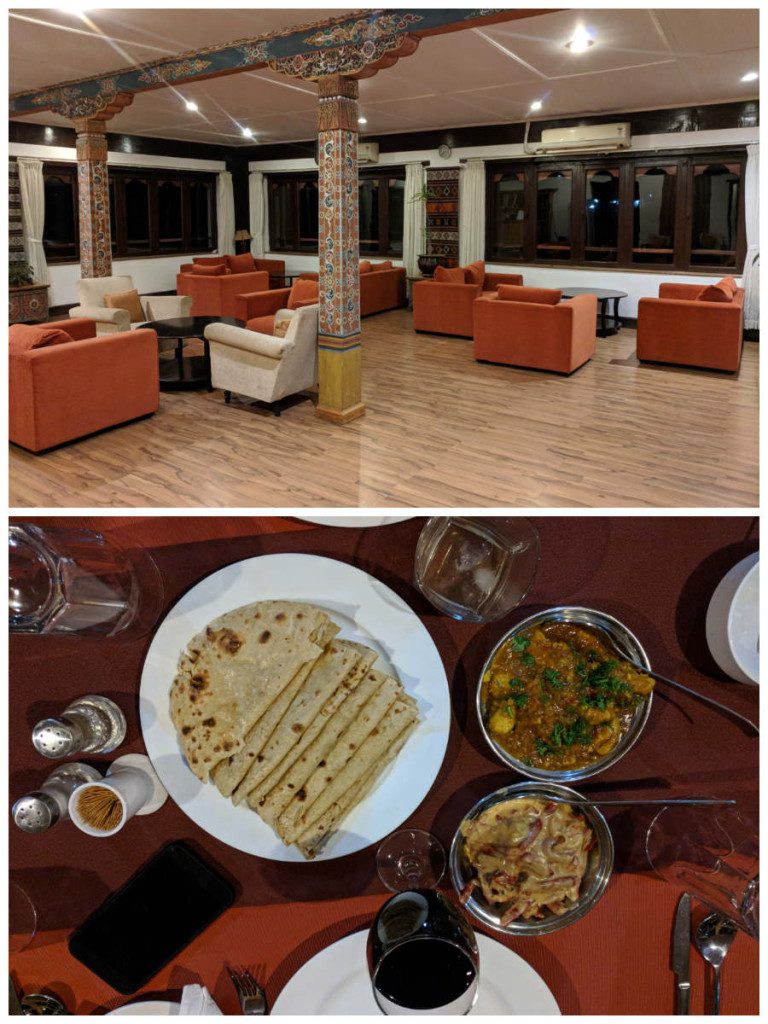
Punakha didn’t really endear itself to D in the second half, but we would still recommend a visit. There’s a serenity to the place that beats the already high average of the country, which in itself is pretty impressive.
Next stop: Paro

Leave a Reply